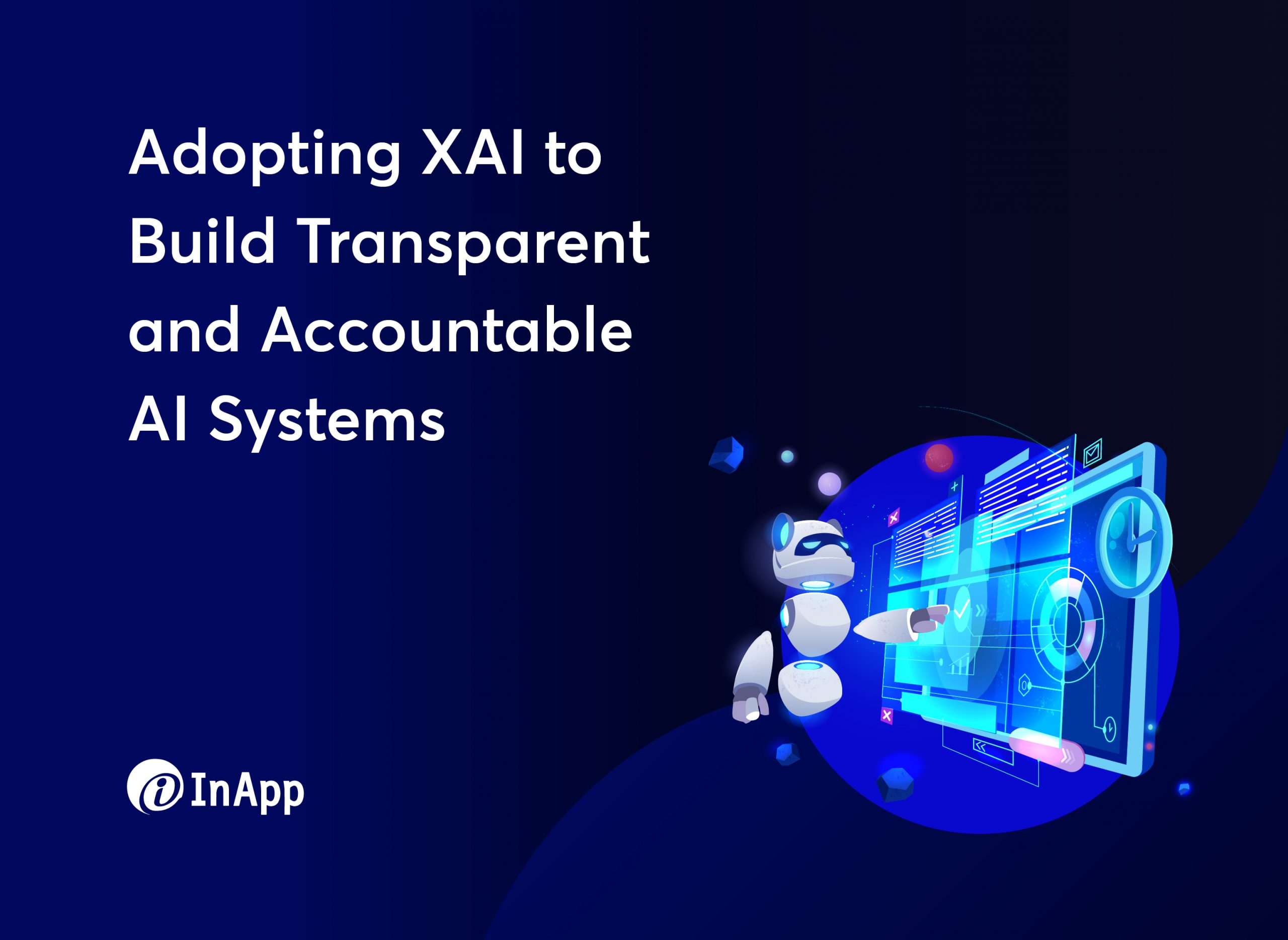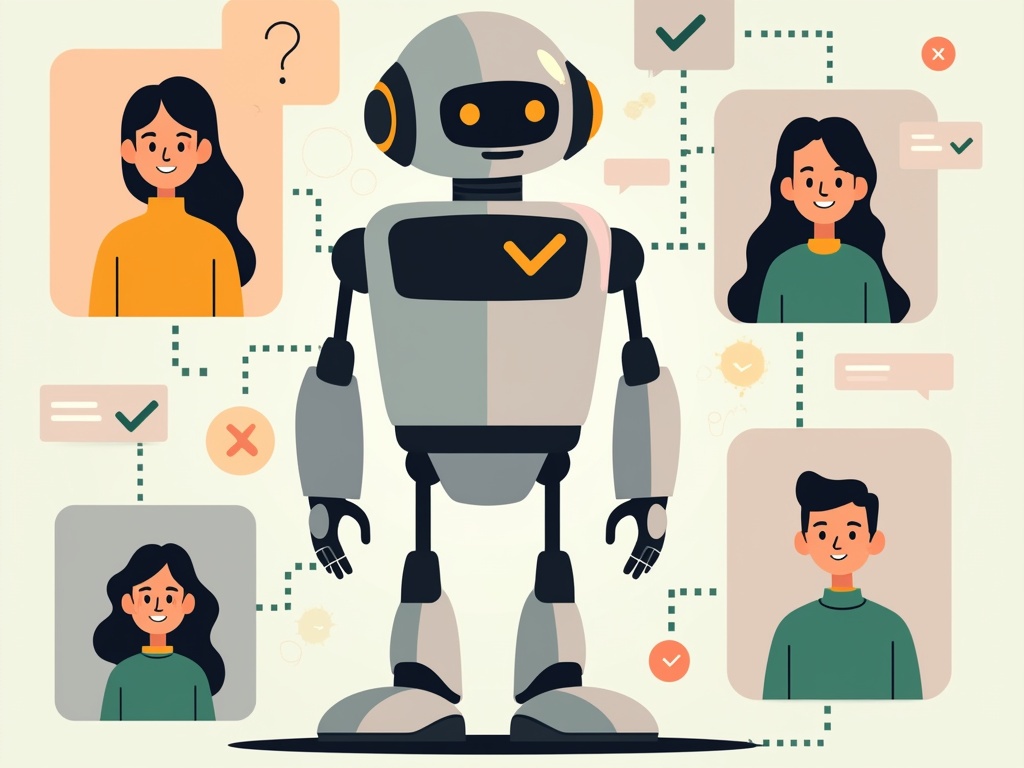The Impact of Explainable AI in HR: Enhancing Transparency and Fairness in Hiring
Ever wonder how artificial intelligence makes decisions about hiring, promotions, or employee evaluations? HR departments increasingly rely on AI to handle critical personnel decisions, but without understanding how these systems arrive at their conclusions, both HR professionals and employees are left in the dark.
Explainable AI (XAI) emerges as a solution to this challenge in human resource management. Unlike traditional ‘black box’ AI systems, XAI provides clear insights into how and why decisions are made, marking a shift toward transparent and accountable HR processes.
Consider this: research shows that AI can streamline vital HR functions while making jobs less stressful and more efficient. However, the real game-changer isn’t just automation – it’s the ability to understand and trust the AI’s decision-making process.
Through XAI, HR departments can ensure fair hiring practices, create unbiased promotion pathways, and develop equitable compensation structures – all while being able to explain exactly how these decisions are reached. Gone are the days of mysterious algorithmic choices that leave employees questioning their career trajectories.
This article explores how Explainable AI is enhancing human resource management by fostering transparency, eliminating bias, and improving efficiency. We’ll also examine how platforms like SmythOS are making it easier to implement XAI in HR processes, ensuring that artificial intelligence serves as a trusted partner rather than an enigmatic decision-maker.
Benefits of Explainable AI in HR


HR professionals face mounting pressure to make fair and unbiased decisions while managing an increasingly complex workforce. Explainable AI (XAI) emerges as a powerful solution, offering unprecedented transparency in how AI systems reach their conclusions.
One of the primary benefits of implementing XAI in HR processes is improved decision-making transparency. When an AI system recommends a candidate for hiring or suggests a particular career development path, HR professionals can now understand the specific factors and reasoning behind these recommendations. XAI enhances decision-making by providing clear interpretability and explanations for each AI-driven suggestion.
Trust building represents another crucial advantage of XAI in human resources. Rather than operating as a mysterious black box, AI systems can now demonstrate their reasoning process, helping both HR teams and employees understand and trust the technology’s recommendations. This transparency is especially vital in sensitive decisions like performance evaluations or promotion considerations.
Enhanced accountability emerges as a third significant benefit. With XAI, HR departments can verify that AI systems make recommendations based on relevant, unbiased criteria. If questions arise about a particular decision, HR professionals can examine the specific factors and logic used, ensuring fairness and compliance with organizational policies.
The practical impact of XAI extends to everyday HR operations as well. For instance, when an AI system flags a potential retention risk among employees, it can now explain which specific indicators led to this assessment – perhaps identifying patterns in performance metrics, communication changes, or work engagement levels. This detailed insight enables HR teams to take more targeted and effective action.
When AI systems explain their decisions clearly, HR professionals can make more informed choices and build stronger trust with employees. XAI transforms AI from a mysterious decision-maker into a transparent analytical partner.
Josh Bersin, HR Industry Analyst
Facilitating Unbiased Decision-Making
Artificial intelligence has transformed hiring and promotion processes, but concerns about bias and fairness remain paramount. Explainable AI (XAI) addresses these challenges by providing transparency into how AI systems make decisions about candidates and employees.
Research shows that XAI can significantly reduce discrimination in HR processes. According to a recent study, when AI systems clearly explain their recommendations, hiring managers make more objective and unbiased decisions about candidates. This is particularly impactful for historically disadvantaged groups. The study found AI recommendations led to increased selection of qualified older and female candidates.
XAI achieves this by highlighting objective qualifications rather than demographic characteristics. For example, when evaluating candidates for promotion, the system can explain its recommendations based on specific achievements, skills, and performance metrics while excluding potentially biasing information about age, gender, or ethnicity.
The technology also helps identify patterns of unconscious bias in existing HR practices. By analyzing historical hiring and promotion data through an explainable lens, organizations can uncover where bias may have influenced past decisions and take corrective action. This creates a feedback loop that continuously improves fairness in HR processes.
Assuming that potential biases of AI-based systems can be identified and controlled for, employing such systems to augment human resource decision-makers in candidate selection provides an opportunity to make selection processes more objective.
Journal of Electronic Markets Research Study
Beyond individual decisions, XAI promotes systemic change by fostering conversations about fairness and diversity. When AI systems can clearly articulate the rationale behind their recommendations, it enables HR teams and managers to have more productive discussions about bias and make more informed choices about talent management.
To maximize impact, organizations should integrate XAI tools thoughtfully into existing HR workflows while providing proper training on how to interpret and act on the system’s explanations. This human-AI collaboration, grounded in transparency and explainability, represents a powerful approach for building more equitable workplaces.
Enhancing Candidate Experience
Transparent feedback has emerged as a crucial element in recruitment. When artificial intelligence provides clear explanations for hiring decisions, candidates gain valuable insight into their application journey. This shift from the traditional black-box approach to one of openness marks a significant evolution in how organizations interact with talent.
According to recruitment experts, transparent and timely feedback can transform rejection into a constructive experience, significantly boosting candidates’ respect for the hiring organization. When AI systems clearly articulate why certain decisions were made, candidates receive immediate, unbiased insights into their strengths and areas for improvement.
Real-world applications of explainable AI in hiring have shown remarkable results in candidate satisfaction. When job seekers understand the specific factors that influenced their application outcome – whether it’s skills alignment, experience gaps, or cultural fit considerations – they’re more likely to maintain a positive view of the organization and potentially reapply for future positions.
The impact of transparent feedback extends beyond individual candidates. Organizations implementing explainable AI in their hiring processes report stronger employer branding and increased candidate engagement. This transparency helps build trust and credibility, as candidates appreciate knowing they’re being evaluated fairly and systematically rather than disappearing into the notorious ‘application black hole.’
For HR teams, the integration of explainable AI creates opportunities to provide more meaningful feedback at scale. Rather than sending generic rejection emails, organizations can now offer specific, actionable insights that help candidates understand their position in the talent market and guide their professional development – a win-win situation that enhances both candidate experience and organizational reputation.
Addressing Challenges in Implementing XAI
Technical complexity stands as one of the foremost hurdles in implementing Explainable AI systems. According to recent research, developing comprehensive XAI models requires sophisticated understanding of both machine learning architectures and domain-specific knowledge, making implementation particularly challenging for many organizations.
Integrating XAI with existing HR systems presents another significant challenge. Legacy infrastructure and established workflows often struggle to accommodate the additional computational requirements and data processing needs of explainable AI models. This integration complexity can lead to increased implementation timelines and resource demands as organizations work to bridge the technical gaps between their current systems and new XAI capabilities.
The trade-off between model accuracy and interpretability creates an ongoing tension in XAI deployment. While simpler models may be easier to explain, they might not capture the full complexity of HR decisions. Conversely, more sophisticated models that deliver higher accuracy often become more opaque and difficult to interpret, potentially undermining the core purpose of implementing XAI.
Scalability issues pose another critical concern, particularly when dealing with large-scale HR operations. As the volume of decisions and data increases, maintaining consistent explanation quality while ensuring timely processing becomes increasingly difficult. Organizations must carefully balance their need for comprehensive explanations with system performance and response times.
The lack of standardized evaluation metrics for XAI implementations further complicates the deployment process. Without clear benchmarks for measuring the quality and effectiveness of AI explanations, organizations struggle to assess whether their XAI systems are truly meeting their intended objectives of increasing transparency and trust in HR decision-making processes.
Moreover, challenges in designing and implementing XAI, including the trade-off between model accuracy and interpretability, the lack of standard evaluation metrics, and the scalability issues of some XAI techniques are addressed.
ACM Digital Library research on XAI challenges
Organizations must adopt a methodical approach to overcome these implementation challenges. This includes investing in proper training for HR professionals, establishing clear governance frameworks for XAI deployment, and ensuring robust testing procedures to validate both the technical performance and practical utility of the explanations generated by the system.
| Challenge | Strategy to Overcome |
|---|---|
| Technical Complexity | Invest in proper training for HR professionals, establish clear governance frameworks, and ensure robust testing procedures. |
| Integration with Existing Systems | Develop solutions that can bridge the technical gaps between current systems and new XAI capabilities. |
| Accuracy vs. Interpretability | Balance the need for simpler models that are easier to explain with the complexity required for accurate HR decisions. |
| Scalability | Maintain consistent explanation quality while ensuring timely processing in large-scale HR operations. |
| Lack of Standardized Evaluation Metrics | Develop clear benchmarks for measuring the quality and effectiveness of AI explanations. |
Leveraging SmythOS for XAI in HR


Modern HR departments require tools that bring transparency and clarity to AI-driven decisions. SmythOS emerges as a powerful solution, offering HR professionals a clear window into how their AI systems make choices about hiring, employee development, and workforce planning.
At the heart of SmythOS is its intuitive visual workflow builder, which transforms complex AI processes into easy-to-understand visual diagrams. HR teams can see exactly how their AI systems evaluate candidates, assess performance, and make recommendations – no technical expertise required. As noted by VentureBeat, this democratization of AI access allows HR staff to implement intelligent automation without years of specialized training.
The platform’s built-in monitoring capabilities give HR leaders unprecedented visibility into AI operations. Teams can track performance metrics in real-time, quickly identify potential biases or issues, and ensure their AI systems maintain fair and ethical standards. This transparency builds trust between HR professionals and AI tools, a crucial factor for successful integration in sensitive people operations.
Integration capabilities set SmythOS apart from conventional platforms. The system seamlessly connects with existing HR tools and databases, from applicant tracking systems to employee management platforms. This means HR teams can implement explainable AI without disrupting their current workflows or requiring extensive technical changes.
Real-time monitoring through SmythOS allows HR professionals to catch and correct potential issues before they impact employees. Whether it’s spotting unusual patterns in hiring recommendations or identifying gaps in performance evaluations, the platform empowers HR teams to maintain oversight and ensure their AI systems align with organizational values and compliance requirements.
By ensuring students truly understand the future of AI Orchestration and are equipped to walk into companies across the globe with a fundamental understanding of how to build multi-agent systems, we believe we can empower future generations to harness the power of artificial intelligence rather than fear it
Michael Walker, SmythOS CMO
Conclusion and Future of XAI in HR
The integration of explainable AI in human resources marks a pivotal shift in how organizations approach fairness, transparency, and decision-making. As companies recognize the value of interpretable AI systems, the future promises even more sophisticated solutions for ensuring equitable HR practices. The emphasis on explainability has already begun transforming critical processes from recruitment and promotion to performance evaluation.
Forward-thinking organizations are discovering that XAI is about building trust and fostering a more inclusive workplace culture. Research indicates that XAI technologies will continue evolving to provide deeper insights into algorithmic decisions, helping HR professionals make more informed choices while maintaining the essential human element in people management.
The road ahead points to XAI systems becoming increasingly sophisticated in their ability to detect and mitigate biases, provide real-time explanations for decisions, and adapt to changing organizational needs. This evolution will empower HR leaders to build more equitable processes while maintaining efficiency and scalability. As these technologies mature, we can expect to see more nuanced applications that balance automation with human insight.
SmythOS exemplifies this forward-looking approach by offering tools that make XAI implementation more accessible and effective. Their platform’s emphasis on transparency and fairness aligns perfectly with the growing demand for responsible AI adoption in HR. By providing intuitive interfaces and robust support for XAI integration, SmythOS is helping organizations navigate the complexities of ethical AI deployment.
The future of HR lies in leveraging these advancing XAI capabilities to create workplace environments where decisions are not only data-driven but also demonstrably fair and transparent. The focus will increasingly shift toward developing systems that can explain their reasoning in ways that resonate with both HR professionals and employees, fostering greater trust and engagement across organizations.
Last updated:
Disclaimer: The information presented in this article is for general informational purposes only and is provided as is. While we strive to keep the content up-to-date and accurate, we make no representations or warranties of any kind, express or implied, about the completeness, accuracy, reliability, suitability, or availability of the information contained in this article.
Any reliance you place on such information is strictly at your own risk. We reserve the right to make additions, deletions, or modifications to the contents of this article at any time without prior notice.
In no event will we be liable for any loss or damage including without limitation, indirect or consequential loss or damage, or any loss or damage whatsoever arising from loss of data, profits, or any other loss not specified herein arising out of, or in connection with, the use of this article.
Despite our best efforts, this article may contain oversights, errors, or omissions. If you notice any inaccuracies or have concerns about the content, please report them through our content feedback form. Your input helps us maintain the quality and reliability of our information.
